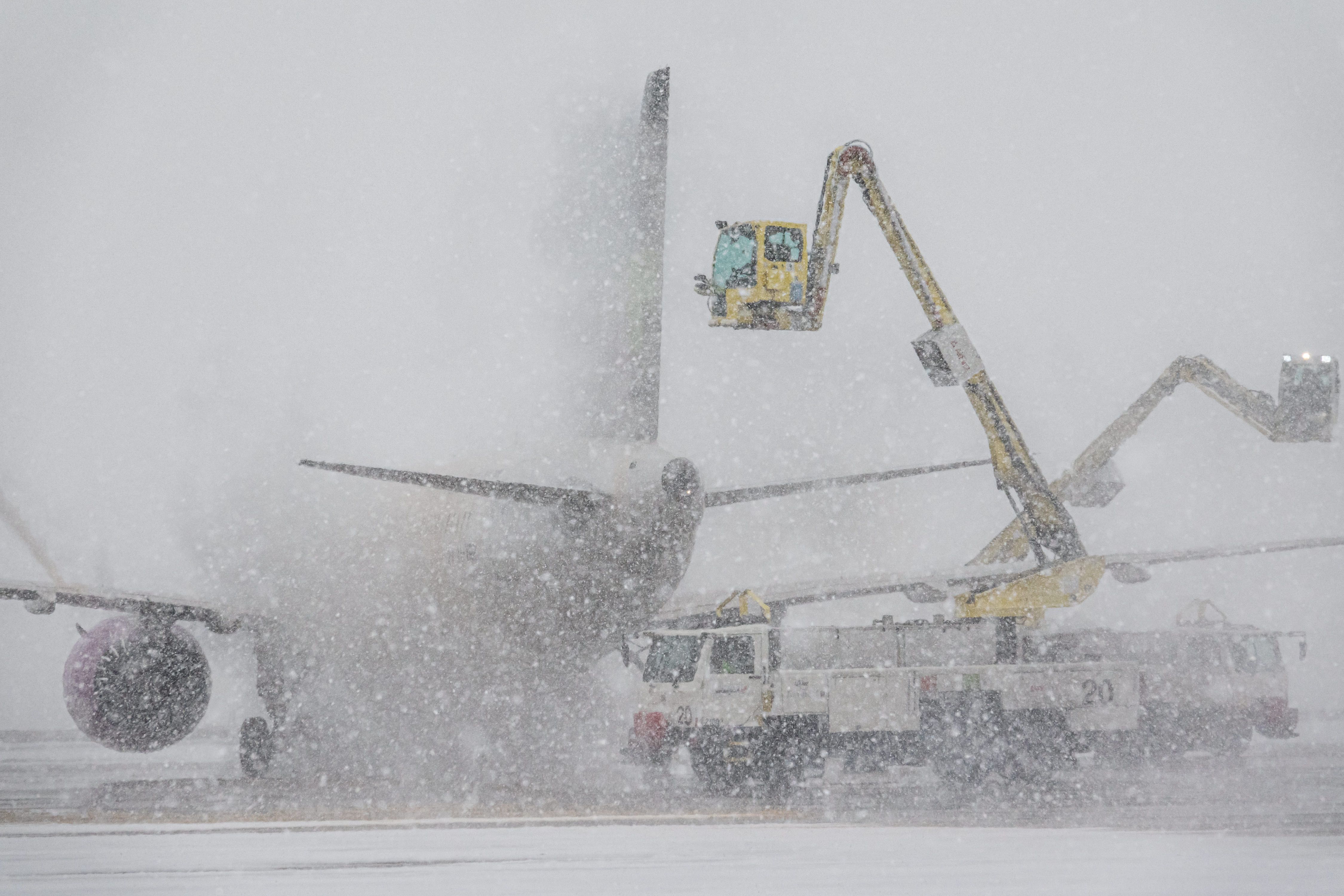Summary
- “FICON” reports provide pilots with crucial information on taxiway conditions to ensure safe taxiing operations.
- “RCAM” values describe runway conditions, aiding pilots with braking action assessments for takeoffs and landings.
- “Reroutes” don’t just describe flight paths but where flight attendants and pilots are heading next.
Like so many other professions, airline life has unique and specific jargon that might have a different meaning than what first meets the eye (or ear!). This article will touch on terms not discussed in previous iterations of this series. Today’s features are “FICON, “RCAM,” “Reroutes,” and Sequences.” I hope you enjoy it and learn something new!
FICON
FICON is the abbreviation for “field condition reporting.” FICONs are published in the NOTAMs (notices to air missions) for a particular airport when there is water, snow, or other clutter on the operations surfaces. FICONs cover runways, taxiways, ramps, and even helipads. A FICON report includes the type of weather obstruction (i.e., snow or ice) and also reports a depth, along with the location. Here’s an example from a Federal Aviation Administration publication about FICONs:
TWY A FICON 1/2IN WET SN…
TWY A FICON 1/2IN WET SN 50FT WID REMAINDER COMPACTED SN…
TWY A NORTH 500FT FICON 1IN DRY SN…
FICON observations are generally made by airport operations teams who drive vehicles across the ramps, taxiways, and runways to determine the depth and, if applicable, the width of the snow, ice, water, slush, etc. FICONs are extremely useful to pilots because taxiway conditions are nearly equal in importance to the runway’s condition. Taxiing can be one of the most challenging parts of the operation, even without slippery or icy taxiways. FICONs present pilots with information on how to plan a taxi around cluttered taxiways or, at the very least, gather insights to help them decide whether to taxi in on two engines and how fast they can go.
Many airlines require pilots to have both engines running when the airport reports icy, snowy, or wet conditions. This helps with control and handling on the ground.
RCAM
An RCAM value dovetails nicely off FICON. RCAM is an acronym for runway condition assessment matrix and is a table used specifically to describe the landing and takeoff conditions for the runway in use. An RCAM report includes an assessment of the runway’s touchdown, midpoint, and rollout areas based on a numeric formula called the runway condition code, or RCC. The highest RCC value is “6,” indicating a dry runway, while lower numbers indicate progressively deteriorated conditions. RCAM reports also include pilot-reported braking action (good, medium, poor, and nil) and any contaminant on the runway, such as ice, snow, or standing water.

Related
How Are Pilots Trained To Operate In Snow?
A few notes on ground operations on snowy days.
Conditions that result in a runway condition code of “4” would be compacted snow on which braking is either medium or good. An RCC of “3” indicates better than medium braking, and there might be wet snow on top of dry snow. An RCC of “1” is ice, and braking is poor. Most pilots would refuse to operate on such a surface, and most airlines would forbid it anyway. A code of “0” indicates nil or nonexistent braking and would mean the runway is covered in wet ice or water on top of snow.
Reroute
The word reroute generally suggests a different path to follow, which, for planes, would mean an altered flight path. Reroutes from ATC are common, but the term has more meanings among pilots and flight attendants. For flight crew, a reroute means getting an unanticipated itinerary change in the middle of a work trip.
Getting rerouted is the result of operational abnormalities. It requires schedulers to remove pilots and flight attendants from a flight (or flights) that they were scheduled to work and have them work different trips instead. This leaves more gaps for the schedulers to fill later on, so rerouting flight crew is only done when the operation is significantly off-schedule.

Related
“Roger!”: The Meanings Behind Famous Pieces Of Pilots’ Radio Terminology
Insight on three often-repeated pieces of pilot lingo.
Reroutes are a bit more common during the summer months. More flights are scheduled, more passengers are booked, and thunderstorms are much more likely. With the airline’s operation stretched to near capacity, there are fewer pilots to call off reserve when flights cancel or crew members “time out” due to duty limitations.
The best option for schedulers to cover a flight at the last minute might be to use crew members who are actively “in the system” working on a trip by reassigning them. Crews sometimes hear about an unanticipated reroute from the gate agent when they arrive after a flight, but this message is usually sent to the ACARS printers while in-flight.
Rerouting crew members, particularly pilots, has become less viable for schedulers in recent years. The most recent versions of pilot working agreements with the airlines in the US stipulate substantial reimbursement to the flight crew members who are reassigned. Subject to earning double if reassigned, rerouting flight crew mid-sequence is an option that airlines use sparingly.
Sequence
A sequence is a linear series of events, and in pilot and flight attendant lingo, there is no exception. However, it does have a specific meaning. A sequence is a string of flights over one or multiple days. It is synonymous with a trip, but it is specific to each crew member.
Photo: LATAM Airlines.
A sequence might get split up into different parts. For example, a pilot might drop the last two flights of a sequence if they desire to get done with work earlier to make a commuter flight home if they don’t live in base. The single sequence would subsequently become two separate sequences with individual identifying numbers.
A sequence is also subject to repetition weekly or daily. Depending on how airlines build schedules, a particular numbered sequence might contain the same flights that comprise a four-day trip. All the flights within these sequences would be identical, save for the departure date. Pilots and flight attendants will bid for a specific sequence every so often (weekly, bi-weekly, or semi-weekly, for example) if they are senior and like making the same trip over and over.
Much more to discuss…
To sum up, FICON and RCAM describe an airport’s surface conditions, while reroutes and sequences are bits of vocabulary that help describe scheduling. Plenty more jargon exists than was covered here. Leave your thoughts in the comments about topics for future articles on the topic!


